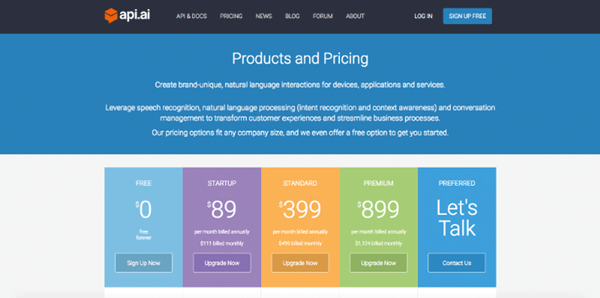Your map to the gnarled jungles of artificial intelligence
The number of services that want to help you make your product smarter has exploded over the last year. If you’re planning a product, it can seem impossible to understand this new field.
As a product manager and a developer, I’ve been playing with some of these services for a few months now. Today I’d like to share a bit of what I’ve learned thus far.
Here are some broad categories of services and ways you might use them in your product:
Prediction and Pattern Recognition
This is the oldest category of services on this list. Popular examples include Google’s Prediction API, Wise.io, and BigML. These services use mathematical techniques to detect patterns in data and make predictions. You provide the data, they provide the insight.
To get started, first you’ll need a dataset you want to better understand or use to make predictions. It’s worth noting that these services perform best with very large datasets. Don’t expect to get much value from them unless you have a live product or you have a large dataset to start from. There are plenty of open-source datasets intended for machine learning applications. BigML has created a great list of potential sources here.
Possible product use cases include:
- Analyse a large set of user behavior data to predict who will become a paying customer;
- Analyse product browsing data to create a list of related products; or
- Analyse transaction data to identify fraudulent transactions
Conversation
This category includes services like api.ai, wit.ai, and smooch.io. These tools let you build conversation interfaces for your product. Improvements in natural language processing have made it easy to understand human speech.
Usually you need three inputs to start building a conversation interface:
Intents - these are just a list of phrases and sentences a user might ask for. If you’re building a music player, your intents might look like this:
- “Play some Rihanna”
- “Add this song to my playlist”
- “Go to the next track”
Actions - next you match those intents with actions you want sent to your product. Usually you tell the service which API endpoint to call when it determines the user’s intent. If I ask to hear some Rihanna, the service will send structured data to that endpoint so it can play the right artist.
Entities - finally, you provide lists of acceptable data. If you’re building a music player, you’d provide a list of artists, a list of songs, as well as any synonyms for each term.
These tools can accept text from clients like Facebook Messenger, SMS, or Slack. They also often support voice recognition. Api.ai also adds machine learning to its engine. The more data you provide to the service, the better it will get at understanding intent.

Possible product use cases incude:
- Chatbots - you want your users to be able to ask for information or trigger actions with text. Read my exploration of chatbots here.
- Home Devices - your product is an Alexa Skill or maybe a connected device. Users need to control your product with their voice.
Image and Video Processing
Decades of research has recently created affordable APIs to analyse images and video. Two popular services are Google’s new Vision API and Clarifai. These services provide similar tools for content and object recognition. Clarifai supports scanning of images and videos, while Google currently only supports images.

All you really need to get off the ground are some images or videos you want to label or index. Then, it’s just a matter of deciding what you want to understand about your assets. Here’s a bit of what Google says its API can detect in images:
- Labels (objects in photos)
- OCR (text)
- Faces
- Landmarks
- Logos
Possible product use cases
- Tagging images with keywords describing their content;
- Use OCR to turn images into text;
- Building a search engine that lets users search for images;
- Determine the emotions on the faces of people in an image; or
- Scanning through images uploaded by users to find inappropriate content.
Custom Machine Learning
Finally, there are advanced tools if you’re working on something more ambitious. The most powerful example is Google’s TensorFlow, which they open-sourced in November. The project is still in beta and documentation is light.

You would only use this tool if you have a team familiar with machine learning techniques. It’s not a service per se, but rather a powerful engine you can customize to build your own unique intelligence.
Possible product use cases
- Use it to teach your computer to generate music and art;
- Build your own Turing machine.
I hope this has provided a useful starting point for adding intelligence to your product. Start brainstorming ways you might take advantage of these technologies today!
It’s already easier than you might think.
Nicholas Alan Brown is a Senior Product Manager with Huge, a global collective of designers, technologists and strategists.
